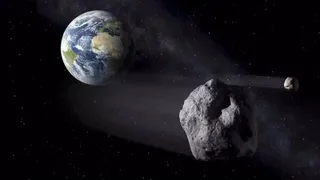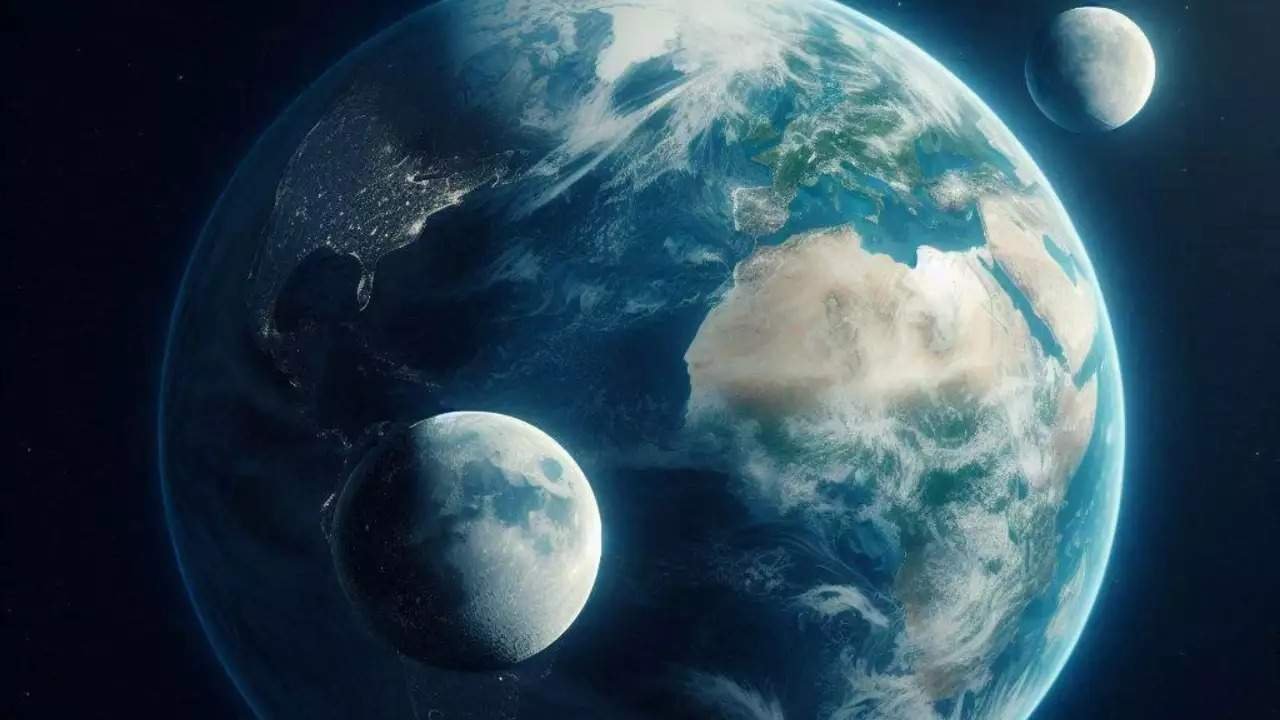| In Short |
| · Mini-Moon 2024 PT5: Earth will temporarily capture an 11-meter-wide asteroid, named 2024 PT5, starting September 29, 2024. It will orbit Earth for 56 days before escaping on November 25 |
| · Visibility: Despite its proximity, 2024 PT5 will be too small and faint to be seen with the naked eye, requiring advanced telescopic equipment to observe |
| · Periodic Visits: This isn’t the first time Earth has captured a mini-moon, and 2024 PT5 is expected to return for another flyby in 2055 |
| · Stadium-Sized Asteroid: A large asteroid, comparable to the size of a stadium, will pass close to Earth in September 2024, posing no threat of collision |
| · Scientific Significance: Both events provide valuable opportunities for astronomers to study near-Earth objects, helping us understand the solar system and plan for future space exploration |
The cosmic neighborhood around Earth is getting busier in 2024. Two quite notable space phenomena will soon capture the attention of scientists and space enthusiasts alike: Earth will soon be escorted by an officially designated temporary “mini-moon,” and a stadium-sized asteroid will come remarkably close to our planet. This article delves into trending topics, pointing out what you need to know about these celestial events.
Starting on September 29, 2024, Earth will have a temporary satellite-a small asteroid named 2024 PT5 known as a “mini-moon.” About the length of a bus at 11 meters in size, the small asteroid was first spotted by the ATLAS Asteroid Terrestrial-impact Last Alert System in August. The mini-moon, for all intents and purposes, will spend only 56 days orbiting Earth before breaking free of Earth’s gravity on November 25, 2024.

Unlike Earth’s permanent moon, mini-moon is from a class of near-Earth objects known as the Arjuna asteroids. Small in size, they’re on orbits like Earth’s-their occasional captures by the Earth’s gravity. The next time around, 2024 PT5 will complete one full orbit around Earth but will be still way too faint to be observed with the naked eye or even most amateur telescopes.
For instance, events such as this are considered to be more than just curiosities by astronomers. Mini-moons represent an important source of research that might fuel future asteroid mining. Space rocks like these can carry materials like water and minerals, which could be used as fuel or resources for long-term space missions.
Importance of Mini-Moons
This isn’t the first time Earth has snagged a mini-moon. Probably the most notable example is 2006 RH120, which orbited Earth for a year between 2006 and 2007. More recently, 2020 CD3 orbited for several years before leaving Earth’s gravity in 2020. The imminence of 2024 PT5 reminds scientists that such captures occur far more often than the public might have in their consciousness.

For instance, while 2024 PT5 will pass through Earth’s orbit for only two months, it is scheduled to make another passage in 2055, providing scientists with a better chance of evaluating the object. With the close proximity of the asteroid to Earth and low velocity, conditions are perfect for its temporary capture
A Stadium-Sized Asteroid Is Approaching Earth
Along with this mini-moon appearance, another visitor to Earth is going to pay an up-close visit to the planet. An asteroid the size of a stadium travels through space at incredibly fantastic speeds and pass by Earth in September 2024. That will be several hundreds meters wide and has no threat to impact Earth, but it can be considered an excellent sighting chance.
It is an NEO: The asteroid will not hit Earth but will make a close pass, and that event would boost attention. More often than not, asteroids fly by harmlessly; however, they are of great interest because of their proximity to Earth. When it comes to such objects and their relations to our solar system, which might pose a threat in the future, the study of these dynamics could be triggered.
NASA uses sophisticated systems, like ATLAS, to track thousands of near-Earth objects, such as this asteroid. While most are not threatening anytime soon, researchers continue to track the orbits. Occasionally, gravitational forces can perturb the orbit of an object so that it later crosses Earth’s path
Can We See These Objects?
As interesting as these events are, neither 2024 PT5 nor the asteroid passing will appear naked-eye. 2024 PT5 is just too small and faint to be seen with the naked eye. Even amateur astronomers won’t catch a glimpse of this mini-moon either because astronomical imaging is required to observe.
As part of the near-Earth object that will pass close to Earth, this one will also pass too far away to be visible without strong telescopic magnification. The stadium-sized asteroid will also pass too close for comfort as near-Earth objects go. Professional astronomers will, however, obtain excellent photos and high detail data that will contribute to the body of knowledge regarding these near-Earth objects
The Importance of Studying Near-Earth Objects
Each of the mini-moon 2024 PT5 and this asteroid reminded one of how much near-Earth objects needed to be continuously monitored and surveyed. Neither of these space rocks is a direct threat to Earth but warns us of the continuous interaction of our Earth with the larger portion of the solar system. Detecting and tracking these early asteroids is crucial for asteroid planetary defence.
Moreover, mini-moons like 2024 PT5 present opportunities for scientific explorations. The intercepted objects may provide information about the chemical composition and behavior of near-Earth asteroids. This will be useful in future space missions and perhaps in asteroid mining as the human race aims to harness the resources in space to sustain interplanetary travels for longer duration(s).
Remembering the temporary capture of a mini-moon by Earth and the flyby of a huge asteroid in September 2024; the cosmos is reminding itself of the dynamics and changes involved. These celestial objects excite the scientists but remind us once again of the importance of uninterrupted observation and study. While most of us will not get to see these space rocks, their existence reminds us about our place in the vast universe.
For Latest News Updates, Click Here.
